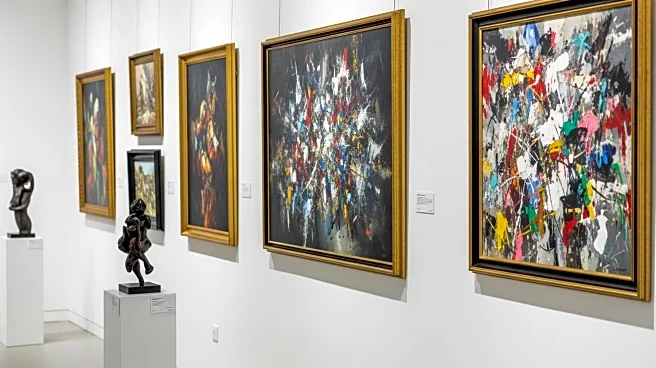What is the story about?
What's Happening?
Christie's has announced the acquisition of the art collection of Robert F. Weis and Patricia G. Ross Weis, valued at over $180 million, for its November sales in New York. The collection includes 80 lots featuring works from significant 20th-century art movements such as Cubism and Abstract Expressionism. Notable artists represented include Pablo Picasso, Henri Matisse, Piet Mondrian, and Mark Rothko. The collection will be divided across several auctions, with 18 pieces featured in a single-owner sale preceding the 20th-century evening sale, and others included in postwar and contemporary day sales. The collection reflects the couple's refined connoisseurship and intellectual rigor, assembled over seventy years.
Why It's Important?
The sale of the Weis collection is significant for the art market, as it includes masterpieces from renowned artists, potentially attracting high-profile collectors and investors. The auction could influence market trends and valuations for 20th-century art. Additionally, the collection's historical significance and the couple's philanthropic legacy in education highlight the cultural and societal impact of art collecting. The sale may also inspire future collectors to pursue similar paths of intellectual and artistic exploration.
What's Next?
Christie's will prepare for the November auctions, likely generating interest from collectors and art enthusiasts worldwide. The auction house may release further details and estimates for individual pieces, potentially influencing bidding strategies. The art community will watch closely to see how the sale impacts market dynamics and the valuation of similar works. The Weis family's stewardship of the collection will transition to new owners, who may continue the legacy of appreciation and philanthropy.
Beyond the Headlines
The Weis collection's sale underscores the ethical considerations of art ownership and the responsibilities of collectors in preserving cultural heritage. It also highlights the role of art in shaping family identities and experiences. The philanthropic contributions of the Weis family to educational institutions reflect the broader societal benefits of art appreciation and collection.
AI Generated Content
Do you find this article useful?














